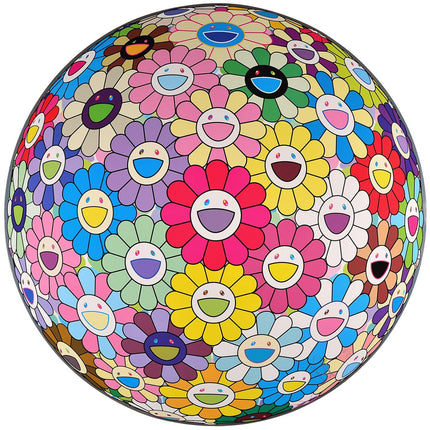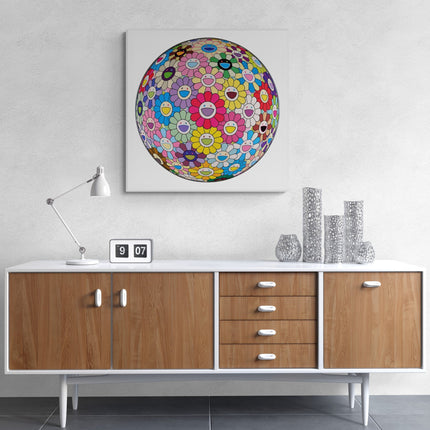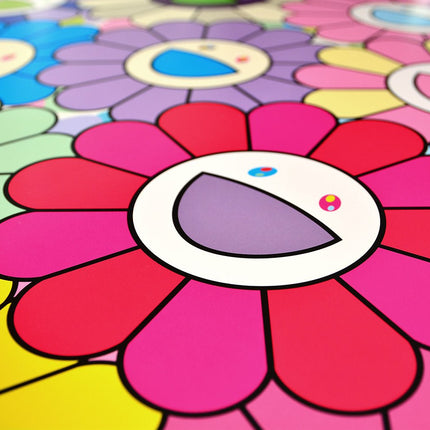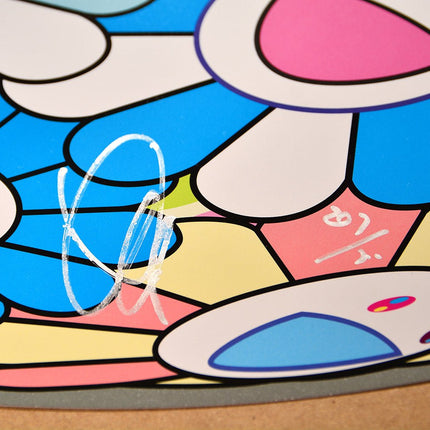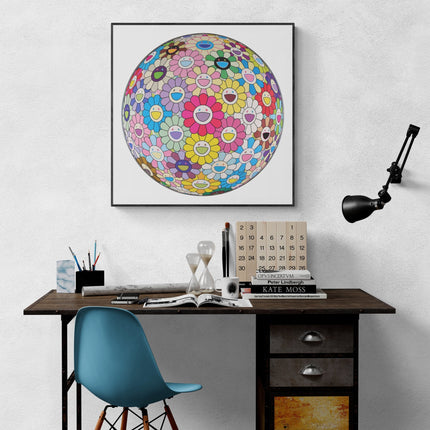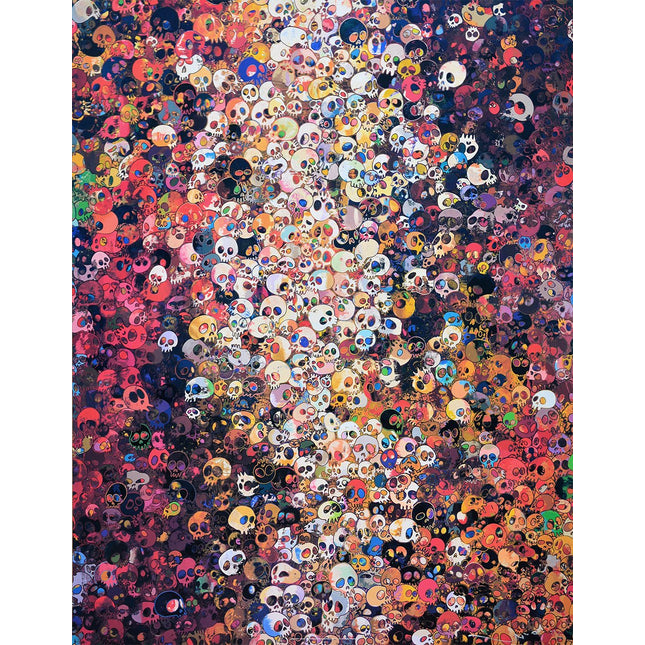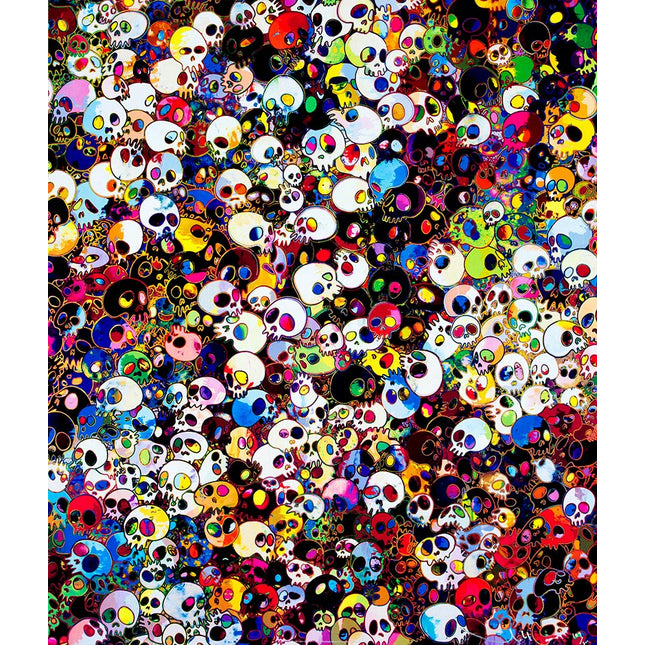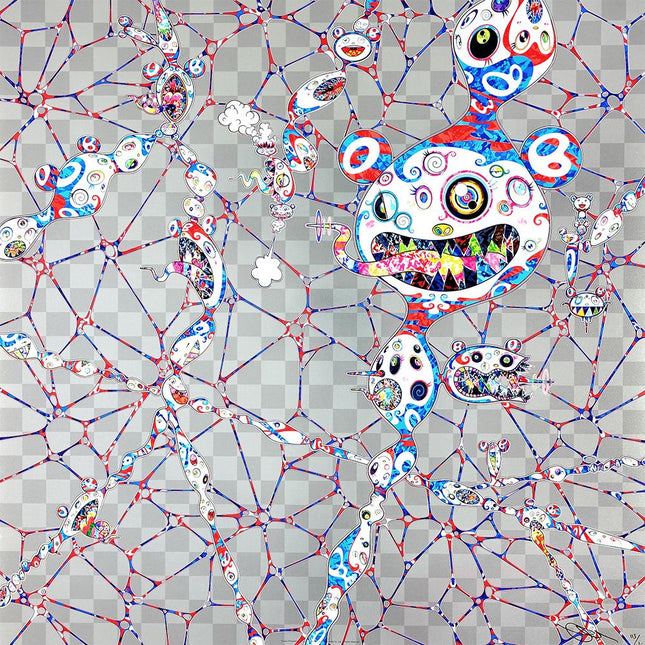Offset lithograph with cold stamp and high gloss varnishing on paper hand signed and numbered by Takashi Murakami. Limited edition of 300 published by Kaikai Kiki Co.
Colorful, Miracle, Sparkle by Takashi Murakami encapsulates the essence of his Superflat style, bursting with color, dynamism, and an almost hypnotic optimism. The piece is dominated by his iconic smiling flowers, which have transcended the realm of art to become a universal symbol, as recognizable as any global trademark.
At first glance, these flowers may seem to embody pure joy and innocence, yet they carry a much deeper meaning. Murakami initially began painting them inspired by the Nihonga tradition, particularly the concept of “setsugetsuka”, which represents the fleeting beauty of the seasons through snow, the moon, and flowers. However, as he developed this motif, its meaning took on a more complex dimension: according to the artist, these vibrant, repetitive flowers evoke the emotional repression and contradictions within Japanese society after the bombings of World War II. Behind their radiant smiles lies a reflection on how Japanese culture has sublimated trauma through aesthetics, adopting an unwavering cheerfulness as a mechanism for survival.
The title Colorful, Miracle, Sparkle reinforces this duality: on one hand, a vibrant celebration of energy and color; on the other, a subtle critique of the homogenization of happiness in a society where positivity becomes a consumable product. The absence of depth in the composition and the layering of saturated colors create an immersive visual effect, where each element competes for the viewer’s attention without establishing a clear hierarchy.
Beyond its accessible and playful aesthetic, the piece serves as a testament to the clash between tradition and modernity, a central theme in Murakami’s work. His reinterpretation of traditional Japanese painting, influenced by anime, manga, and contemporary pop culture, results in an image that, despite its lighthearted appearance, invites deeper reflection on cultural identity, collective memory, and the role of art in a nation’s emotional reconstruction.
Ultimately, Colorful, Miracle, Sparkle is a work that plays with the ambiguity of human emotions, oscillating between euphoria and melancholy, innocence and sophistication. With his characteristic balance between playfulness and critical depth, Murakami invites us to look beyond the surface and question the true nature of the happiness that surrounds us.
